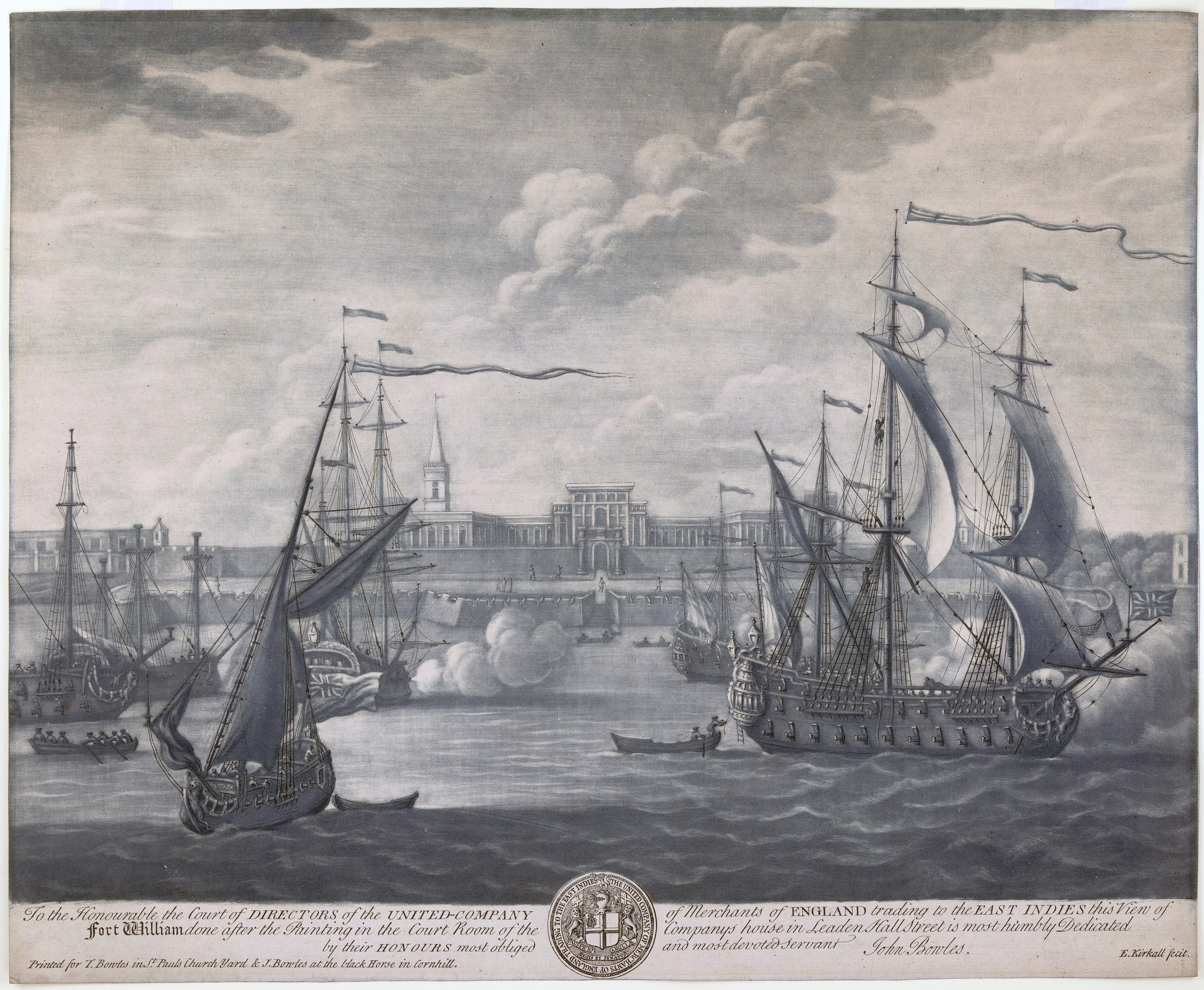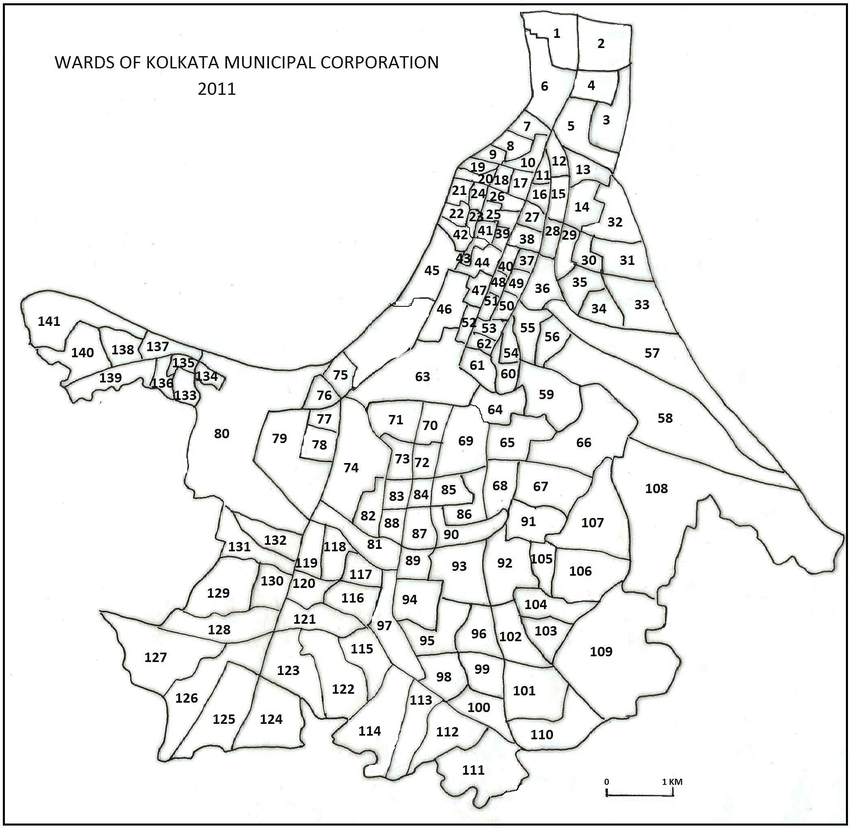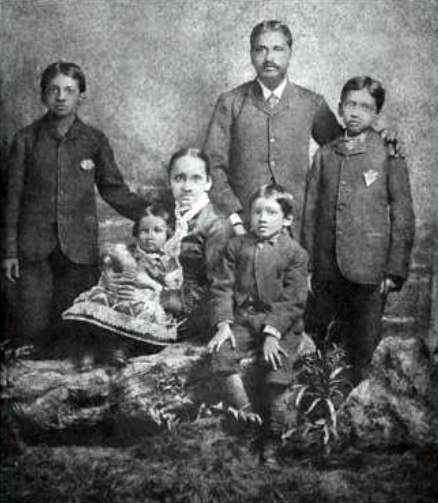|
Aurobindo Sarani
Aurobindo Sarani (formerly Grey Street) is one of the oldest and most congested main roads in north part of Kolkata. Many buses, taxis and auto-rickshaws use the road. It connects Ultadanga with Shobhabazar. West of Gouribari, Ultadanga Main Road (Bidhannagar Road) becomes Aurobindo Sarani. It becomes Shobhabazar Street after crossing Jatindra Mohan Avenue (Shobhabazar Petrol Station).Google maps This road's name is a tribute for Aurobindo Ghosh, a famous freedom-fighter and Hindu saint of India. Aurobindo Sarani consists of several important places, such as APC Road crossing, Bidhan Sarani crossing and Jatindra Mohan Avenue crossing. This is a very busy road, consisting of one of Kolkata's biggest markets, the Hatibagan Market, at Bidhan Sarani Crossing. The road is connected to Ultadanga Main Road (Bidhannagar Road) with Arobindo Setu (Gouribari Bridge), over one of Kolkata's canals. The bridge was opened in 1974 and connects Khanna/Gouribari (Maniktala) with Ultadanga ... [...More Info...] [...Related Items...] OR: [Wikipedia] [Google] [Baidu] |
Bidhan Sarani
Bidhan Sarani (formerly known as Cornwallis Street) is a principal north–south thoroughfare in north part of Kolkata, the capital of the Indian state of West Bengal. It was named after the first Chief Minister of West Bengal, Bidhan Chandra Roy. The road starts from Shyambazar five-point crossing and extends up to MG Road crossing (Barna Parichay Market), after which the street continues as College Street towards the south. Bidhan Sarani encompasses the neighbourhoods of Shyambazar, Hatibagan ( Aurobindo Sarani crossing), Hedua (Dani Ghosh Sarani/Abhedananda Road crossing), Shimla ( Vivekananda Road crossing), Thanthania and College Street. History The three-mile long Maratha Ditch was excavated in 1742 as a protection against the marauding Maratha soldiers then foraging in the countryside but who never came. It was filled up in 1799 to build the Circular Road,Nair, P. Thankappan in ''The Growth and Development of Old Calcutta'', in ''Calcutta, the Living City'', Vol. I, ... [...More Info...] [...Related Items...] OR: [Wikipedia] [Google] [Baidu] |
Hatibagan
Hatibagan is a neighbourhood of North Kolkata in Kolkata district in the Indian state of West Bengal. Overview The area is under Shyampukur and Burtolla police stations. It is next to Shyambazar. The place is popular for its shops, markets, cinema halls and old theatres. No other places in Kolkata cover as many cinema & theatre halls as Hatibagan. One of the most popular and famous cinema halls here is the Star Theatre, with many people in North Kolkata choosing to watch films there instead of multiplexes because of its low ticket prices. Hatibagan is one of the oldest traditional markets in Kolkata city. One can buy typical Bengal silk and cotton saris here. Hatibagan broadly covers Ward No. 10 and 11 of Kolkata Municipal Corporation. This locality is also renowned for having some of the best Durga Puja committees in the city.Hatibagan Sarbojanin and Hatibagan Nabin Pally being the most notable ones. The Japanese had dropped a bomb at Hatibagan market during World War II b ... [...More Info...] [...Related Items...] OR: [Wikipedia] [Google] [Baidu] |
Kolkata
Kolkata (, or , ; also known as Calcutta , List of renamed places in India#West Bengal, the official name until 2001) is the Capital city, capital of the Indian States and union territories of India, state of West Bengal, on the eastern bank of the Hooghly River west of the border with Bangladesh. It is the primary business, commercial, and financial hub of East India, Eastern India and the main port of communication for North-East India. According to the 2011 Indian census, Kolkata is the List of cities in India by population, seventh-most populous city in India, with a population of 45 lakh (4.5 million) residents within the city limits, and a population of over 1.41 crore (14.1 million) residents in the Kolkata metropolitan area, Kolkata Metropolitan Area. It is the List of metropolitan areas in India, third-most populous metropolitan area in India. In 2021, the Kolkata metropolitan area crossed 1.5 crore (15 million) registered voters. The ... [...More Info...] [...Related Items...] OR: [Wikipedia] [Google] [Baidu] |
Kolkata Metro
The Kolkata Metro is a rapid transit system serving the city of Kolkata in West Bengal, India. , it has two operational lines, a line from Dakshineswar to Kavi Subhash and a line from Salt Lake Sector V to Sealdah, for a total of . Four other lines are in various phases of construction. The system has a mix of underground, at-grade and elevated stations using both broad-gauge and standard-gauge tracks. Trains operate between 06:55 and 22:30 IST and the fares range from ₹5 to ₹25. The Kolkata Metro is the first planned and operational rapid transit system in India. It was initially planned in the 1920s, but construction started in the 1970s. The first underground stretch, from Bhawanipore (now Netaji Bhawan) to Esplanade, opened in 1984. Line 2, or the East–West Corridor, opened in 2020. It is the fifth-longest operational metro network in India after the Delhi Metro, Hyderabad Metro, Namma Metro and Chennai Metro. Metro Railway, Kolkata and Kolkata Metr ... [...More Info...] [...Related Items...] OR: [Wikipedia] [Google] [Baidu] |
Shobhabazar Sutanuti Metro Station
Shobhabazar Sutanuti is a station of the Kolkata Metro. It is located near Shobhabazar. History Construction The station Structure Shobhabazar Sutanuti is underground metro station, situated on the Kolkata Metro Line 1 of Kolkata Metro. Station layout Connections Bus Bus route number 3B, 30C, 43, 47B, 78, 211, 211A, 211B, 214, 214A, 215/1, 215A, 219/1, 222, 242, 5 (Mini), 7 (Mini), S139 (Mini), S159 (Mini), S160 (Mini), S161 (Mini), S163 (Mini), S164 (Mini), S166/1 (Mini), S168 (Mini), S175 (Mini), S176 (Mini), S180 (Mini), S181 (Mini), S189 (Mini), C28, E32, S9A, S10, S11, S15G, S17A, S32, S32A, S57, AC20, AC40, AC54 etc. serve the station. Train Sovabazar Ahiritola railway station is the nearest rail station. Bidhannagar Road railway station is also located nearby. Auto Ahiritola to Ultadanga via Shobhabazar Sutanuti Metro Station and B.K.Paul to Cossipore 4B Bus stand via Baghbazar Entry/Exit Gallery File:Sova_Gate_1.jpg, Gate no. 1 of the metro station Fil ... [...More Info...] [...Related Items...] OR: [Wikipedia] [Google] [Baidu] |
Kolkata Municipal Corporation
Kolkata Municipal Corporation (abbreviated KMC; also Calcutta Municipal Corporation) is the local government of the Indian city of Kolkata, the state capital of West Bengal. This civic administrative body administers an area of . Its motto, ''Purosri Bibardhan'', is inscribed on its emblem in Bengali script. Geography The Kolkata Municipal Corporation is located at in Kolkata, West Bengal. Department Structure Kolkata Municipal Corporation was established in 1876. Under the guidance of the first Minister of Local Self-Government in Bengal, Sir Surendranath Banerjee, the Calcutta Municipal Act of 1923 made provision for the enfranchisement of women and the election of a Mayor of Kolkata annually. Deshbandhu Chittaranjan Das was the first Mayor of Kolkata Municipal Corporation with Subhas Chandra Bose as his Chief Executive Officer. Later mayors include Deshapriya Jatindra Mohan Sengupta, Subhas Chandra Bose, Bidhan Chandra Roy, Nalini Ranjan Sarkar, Abul Kasem Faz ... [...More Info...] [...Related Items...] OR: [Wikipedia] [Google] [Baidu] |
Ultadanga
Ultadanga is one of the most crowded junctions in Kolkata. The place is located at the north-eastern fringe of the city and marks the limit of Kolkata district. Prominent places in Ultadanga are Telenga Bagan and Muchi Bazar. Etymology Ultadanga lay outside the Maratha Ditch, beyond Halsibagan, where the Sikh billionaire Umichand had a garden. It was the land on the opposite bank (''ulta'' in Bengali).Nair, P.Thankappan, ''The Growth and Development of Old Calcutta'', in ''Calcutta, the Living City'', Vol. I, pp. 14-15, Edited by Sukanta Chaudhuri, Oxford University Press, 1995 edition. History The East India Company obtained from the Mughal emperor Farrukhsiyar, in 1717, the right to rent from 38 villages surrounding their settlement. Of these 5 lay across the Hooghly in what is now Howrah district. The remaining 33 villages were on the Calcutta side. After the fall of Siraj-ud-daulah, the last independent Nawab of Bengal, it purchased these villages in 1758 from Mir Jafar ... [...More Info...] [...Related Items...] OR: [Wikipedia] [Google] [Baidu] |
Shobhabazar
Shobhabazar (also spelt Sovabazar; bn, শোভাবাজার) is a neighbourhood of North Kolkata, in Kolkata district, in the Indian state of West Bengal. History Sheths and Basaks, well-to-do traders at Saptagram, were among the first to settle in Sutanuti and are said to have cleared much of the jungles in the area. Neighbouring Shyambazar was named after the family deity of the Basaks, Shyam Roy (or Gobinda), the attendant of goddess Kali by Shobharam Basak, one of the richest native inhabitants of 18th-century Kolkata. Cotton, H.E.A., ''Calcutta Old and New'', 1909/1980, p. 289-291, General Printers and Publishers Pvt. Ltd. When Ramcharan Deb was murdered by Maratha marauders in the jungles of Midnapore, his widow came back to their house at Gobindapur with her three sons and five daughters. The house was washed away by the Hooghly River and they moved to Arpooly, and from there to Shobhabazar. Ramcharan's youngest son Maharaja Nabakrishna Deb rose to fame and pow ... [...More Info...] [...Related Items...] OR: [Wikipedia] [Google] [Baidu] |
Sri Aurobindo
Sri Aurobindo (born Aurobindo Ghose; 15 August 1872 – 5 December 1950) was an Indian philosopher, yogi, maharishi, poet, and Indian nationalist. He was also a journalist, editing newspapers such as ''Vande Mataram''. He joined the Indian movement for independence from British colonial rule, until 1910 was one of its influential leaders, and then became a spiritual reformer, introducing his visions on human progress and spiritual evolution. Aurobindo studied for the Indian Civil Service at King's College, Cambridge, England. After returning to India he took up various civil service works under the Maharaja of the Princely state of Baroda and became increasingly involved in nationalist politics in the Indian National Congress and the nascent revolutionary movement in Bengal with the Anushilan Samiti. He was arrested in the aftermath of a number of bombings linked to his organization in a public trial where he faced charges of treason for Alipore Conspiracy. H ... [...More Info...] [...Related Items...] OR: [Wikipedia] [Google] [Baidu] |
AJC Bose Road & APC Road
Acharya Jagadish Chandra Bose Road (earlier known as Lower Circular Road) and its continuation northwards called Acharya Prafulla Chandra Road (earlier known as Upper Circular Road), are together the longest and the most important north-south thoroughfare in Kolkata, India. History The road came upon the stretch that formed the Maratha Ditch that was dug in 1742 to protect the City from the Bargi invasions. In 1799 the ditch was filled up and the current outline of the road built. Until the 1870s, the Circular Road was considered the de facto eastern boundary of the City of Calcutta as the suburbs to its east, i.e. Manicktala, Rajabazar, Narikeldanga, Ultadanga, and Beliaghata were still semi-urban semi-rural villages. Legacy Named after the renowned chemist Acharya Prafulla Chandra Roy and the renowned physicist and botanist Acharya Jagadish Chandra Bose. Stretch and description APC Road and AJC Bose Road taken together is the longest road in Kolkata. APC Road emerg ... [...More Info...] [...Related Items...] OR: [Wikipedia] [Google] [Baidu] |
Maniktala
Maniktala is a residential area of North Kolkata, in Kolkata district, West Bengal, India. Etymology The tomb of Manik Pir is located in lane near Maniktala crossing. Some people say, the neighbourhood is named after Manik Pir. Others say, Manik pir (erst: Syed Husen Ud din shah) came from North India on early eighteenth century. But Maniktala, this name is also mentioned in a map of 1784. They say, the bodyguard of Nawab of Bengal Alivardi Khan, Manikchand Bose (erst : Manikram Bose) lived in this place as the caretaker of Calcutta (Ali Nagar) around from 1756. He was a wise, Compassionate man. That's why he was so popular to all people. From Manikchand this area is called Maniktala. History In 1889, the suburbs of old Calcutta were grouped in four municipalities. Maniktala formed the East Suburban Municipality. In the same year, Maniktala, Ultadanga and Beliaghata became 'fringe area wards' of Kolkata Municipal Corporation. The Calcutta Municipal Act of 1923 brought a ... [...More Info...] [...Related Items...] OR: [Wikipedia] [Google] [Baidu] |







